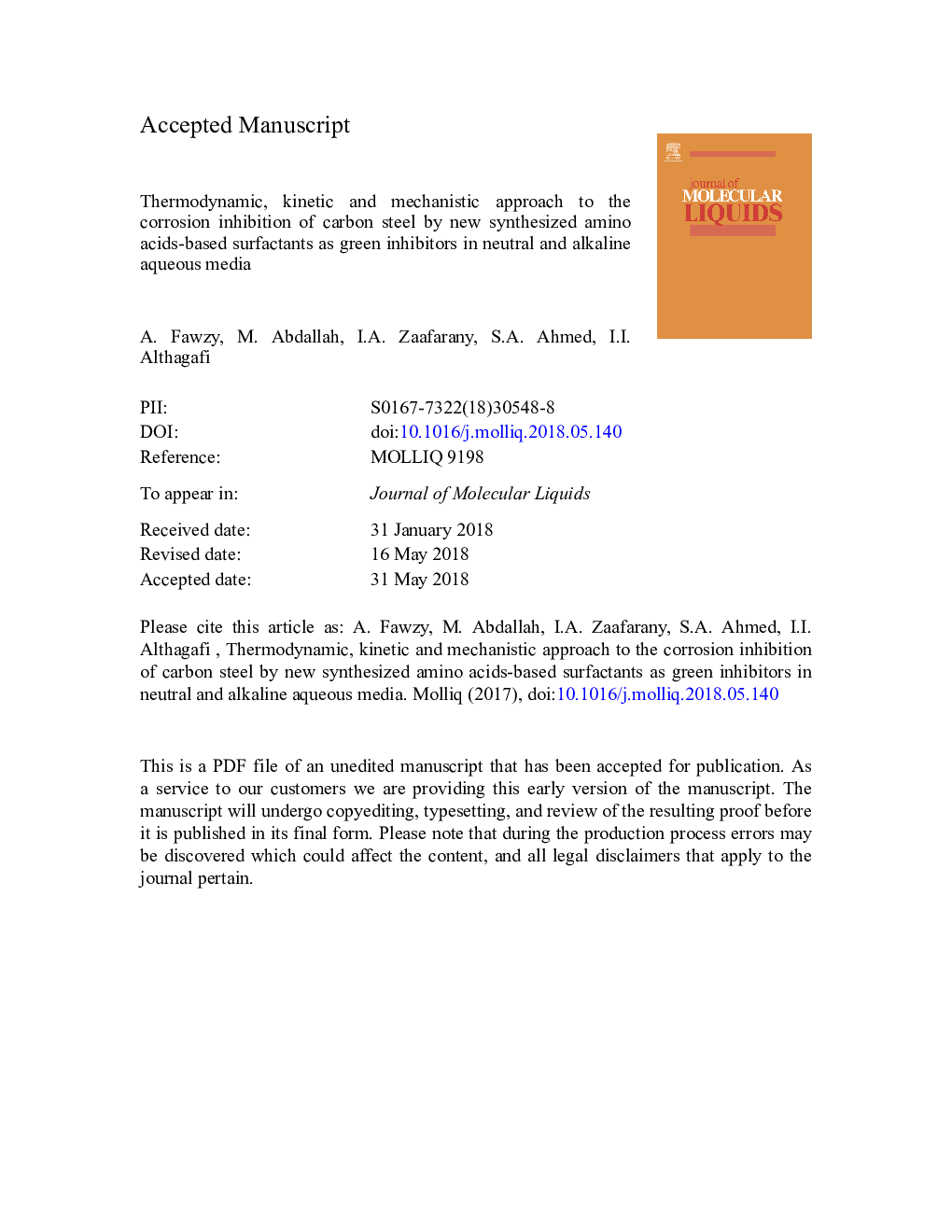| Article ID | Journal | Published Year | Pages | File Type |
|---|---|---|---|---|
| 7841892 | Journal of Molecular Liquids | 2018 | 34 Pages |
Abstract
The inhibiting power of three synthesized amino acids based-surfactant molecules, namely, sodium N-dodecyl asparagines (AS), sodium N-dodecylhistidine (HS) and sodium N-dodecyltryptophan (TS) on the dissolution of carbon steel was inspected in 0.5â¯M NaCl and 05â¯M NaOH solutions at 25â¯Â°C. The methods employed in this work were weight-loss (WL), potentiodynamic polarization (PP) and electrochemical impedance spectroscopy (EIS). The chemical structures of the synthesized surfactants were confirmed by FT-IR and 1HNMR. The inhibition efficiencies were found to increase as the surfactants concentrations increase, while decreasing with increasing the concentration of the corrosive media (NaCl & NaOH) and temperature. Results obtained from the different techniques revealed that the inhibition efficiency of the compound TS was higher than those of both AS and HS. The inhibition efficiencies of the synthesized surfactants were declined in terms of strong adsorption of surfactants on the surface of carbon steel and forming a protective film and such adsorption was found to obey Langmuir isotherm. Both thermodynamic and kinetic parameters were evaluated which support the mechanism of physical adsorption of the inhibitors. The tested surfactants were found to act as mixed-type inhibitors with anodic predominance. The surface morphology of the carbon steel surface was examined by scanning electron microscopy (SEM). The inhibitory mechanism of carbon steel corrosion was suggested. Results obtained from all employed methods are consistent with each other.
Related Topics
Physical Sciences and Engineering
Chemistry
Physical and Theoretical Chemistry
Authors
A. Fawzy, M. Abdallah, I.A. Zaafarany, S.A. Ahmed, I.I. Althagafi,
